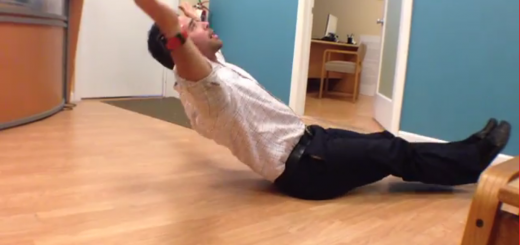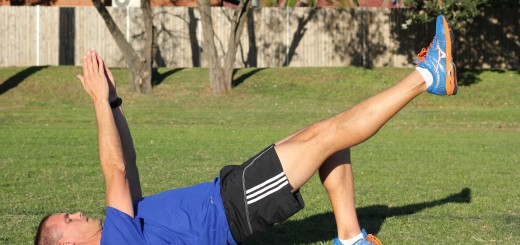
Often called golfer’s elbow, medial epicondylitis (i.e., inflammation of the epicondyle) is occurring more regularly with overhead athletes, especially CrossFitters and Olympic lifters. Which begs the all-important question: Why?
Understanding How the Elbow Works
The order of priority for upper extremity motions is… to move from slow-moving power-producing muscles to moderate-speed-moderate-power muscles, and finally to small, fine motor muscles.
To really understand the elbow, there’s a few basic principles that are critical. First is the joint-by-joint approach (functional strengthening described by Miachael Boyle’s in Advances in Functional Training — see below),which is the foundation for functional motion. Put in simplest terms, compromised glenohumeral joint motion — either too little or too much — has a direct effect on the function of the wrist and elbow. The order of priority for upper extremity motions is from proximal to distal. Another way of thinking about this is to move from slow-moving power-producing muscles to moderate-speed-moderate-power muscles, and finally to small, fine motor muscles. Any change in the sequencing of these muscles results in increased demands on the surrounding tissues; in turn, this increased mechanical demand often results in local pain.



Tendinitis vs. Tendinosis: What’s in a name?
Just to get terminology consistent, tendinitis is acute tendon inflammation, while tendinosis is chronic tendon degeneration without inflammation. Here’s a few more: paratenonitis is inflammation of the paratenon, and enthesopathy is a tendon-bone junction disorder. Why does this matter? Simply put, the morphological differences change how you treat the symptoms.
Active inflammation is the body’s natural healing process, but pain chronic in duration withoutthe presence of inflammatory cells means there is NO active remodeling process occurring. Think tenderloin versus beef jerky.
Function of Tendons

Tendons are designed to carry loads and maintain tension for extended periods of time, and because of this, they require 7.5 times less use of oxygen than muscles.
The primary role of a tendon is to transfer contractile energy to the skeleton to create joint movement. So how does damage occur? Most often injuries involve stretch deformation (see stretch strain cycle), inadequate recovery, or frictional damage from shearing and/or compression. Tendons are designed to carry loads and maintain tension for extended periods of time, and because of this, they require 7.5 times less use of oxygen than muscles.
How does tendinopathy occur?
The most common extrinsic factors related to chronic tendinopathies include: overuse, training errors, improper training surfaces, and inappropriate equipment. Instrinsic factors include age, vascular supply, anatomical variation, skeletal postural deficits, eccentric strength deficits, and flexibility. Chronic tendinopathies peak between the ages of 30-50, especially during the 4th and 5th decades. Sesto, et al have suggested that edema and reduction in mechanical stiffness following short duration submaximal eccentric activity contributes to overuse in the upper extremity. Granted, this was in workers involved with torque-producing power tools at maximal exertional levels or until exhaustion.
Identifying and Treating Elbow Pain

Lateral elbow pain is typically aggravated with wrist and elbow extension, while medial elbow pain is aggravated with wrist flexion and supination and involves the pronator teres and the flexor carpi radialis.
This includes lateral and medial elbow pain, and injuries to the distal bicep. Injuries to the distal bicep occur most often with forceful eccentric contraction: even then, injuries are most commonly associated with a single traumatic event of eccentric sudden extension load applied to a flexed and supinated forearm. Lateral elbow pain is more common in workers, is more common in the dominant arm and 10 times more common than medial elbow pain. Lateral elbow pain is typically aggravated with wrist and elbow extension, while medial elbow pain is aggravated with wrist flexion and supination and involves the pronator teres and the flexor carpi radialis.So now we get to the nuts and bolts. Why is all of that important? Functionally the flexor mass is on the medial side of the forearm, while the extensor mass is on the lateral side of the forearm. List for a moment the number of motions in CrossFit that require wrist and elbow flexion, at maximal exertional leve or to exhaustion. Let’s see…false grip muscle-ups and strict grip muscle-ups, kipping and butterfly pull-ups, toes-to-bar, knees-to-elbow, kettlebell swings, snatches and cleans, barbell snatches, barbell cleans…
The rate of injury at the elbow in Olympic lifting is low compared to baseball; however, the mechanism of elbow injuries in Olympic weight lifting is consistent.
The false grip used for muscle ups is described as hooking onto the pisiform and weight bearing, maintaining finger flexion and wrist flexion with ulnar deviation throughout the pulling and kipping phase of the movement. This requires isometric contractions from the flexor carpi ulnaris, flexor carpi radialis, palmaris longus, flexor digitorum superficialisand flexor digitorum profundis (assuming there’s no other muscles in your body helping). This sustained contraction places high demand on all of the muscles that have an origin or insertion on the medial epicondyle.Another motion that places high demand on the medial elbow is snatching. A large component of this movement is technical. Let’s assume we can remove all influence of the 1st and 2nd pull on bar path and keep things simple. If the bar path loops at all, a horizontal force is now acting on the bar which means at the catch the bar is looping backward. This horizontal force results in an attempt to decellerate the bar, or the bar looping behind the lifter. The rate of injury at the elbow in Olympic lifting is low compared to baseball; however, the mechanism of elbow injuries in Olympic weight lifting is consistent.
Treatments for Elbow Pain

1. Work on grip strength.2. Learn proper Oly lifting technique.
3. Maintain & improve shoulder mobility consistently.
4. Check your nerve glides.
First, don’t wait until pain is restricting you. Start with grip strengthening — especially combining finger flexion with wrist flexion — and begin working on isometric endurance of your finger and wrist flexors.Second, work with an experienced Olympic lifting coach, since technique 100% matters.
Third, consistently work on shoulder mobility and scapular stability for pulling and pressing. Remove reasons to compensate at the elbow, which means working glenohumeral joint mobility and wrist mobility in addition togrip strength; scapular musculature strengthening; and focusing on proper technique given your individual body type.
Lastly, check ulnar and median nerve glides frequently, and ensure your nerves are appropriately sliding through muscular tracks. That deep, funky, someone-frogged-you-in-the-arm ache that doesn’t get better with stretching — you know, the one that feels like you banged your “funny bone” and won’t go away — is most likely a very ticked off ulnar nerve that is so ropey you could strum it like a guitar string. If that’s the case, it’s probably really limiting your ability to grip.
References
Boyle, M. Advances in Functional Training. New York: Lotus Publishing; 2011.
Original Article by:
Whitney Welsch at
TabataTimes












